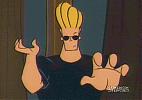The days of photocopying printed clip art from a book and then painstakingly cutting, positioning, and photocopying are long over.
With a gallery of electronic clip art images, Word makes it a lot easier to place graphical accents such as drawings and photographs directly in your document.
Here are the basics: Click in the document where you want to insert the clip art. Then open the Clip Art task pane (Insert menu, Picture submenu). Use simple keywords to search for the subject matter you want, and then choose from the resulting images.
You can refine your search to look for particular types and sources of images using the Search in and Results should be boxes.
Note that the image you insert is embedded in your document, which means that its file size is added to the overall file size of your document.
In the Picture: Figure 1 - Search for clip art in the Clip Art task pane.
Figure 2 - Example of clip art.
[IMG]http://i639.***********.com/albums/uu119/unojonesishere/ZA060496981033.gif[/IMG]
f you've got a particular graphic on hand that you want to use, such as a photographic image, you click From File on the Picture submenu. Then you locate the graphic on your hard disk, server, Web site, or other location, and insert it directly from there. (Note that by default, Word looks in the My Pictures folder.)
By default, the file is embedded directly in your document and saved with it the next time you save the document. If you want to save file size, you can instead link to the picture, meaning that instead of actually placing the file inside your Word document, you add a link to its source.
In the Picture: Figure 1 - Inserting a picture from a file.
Figure 2 - Example of a picture from a file.
[IMG]http://i639.***********.com/albums/uu119/unojonesishere/ZA060547381033.gif[/IMG]
Shapes are drawing objects, which you generate as part of your document, rather than bringing them in from a separate source. They include lines, connectors, arrows, cartoon callout balloons, and many other basic drawings.
To insert a shape, click AutoShapes on the Picture submenu, and then select the shape you want on the AutoShapes toolbar.
When you do, the drawing canvas appears. Just click where you want the shape to appear. Then once the shape is in place, you can move, resize, rotate, and otherwise change it.
In the picture: Figure 1 - Inserting an AutoShape opens the AutoShapes toolbar.
Figure 2 - Example of an AutoShape.
[IMG]http://i639.***********.com/albums/uu119/unojonesishere/ZA060548521033.gif[/IMG]
Word offers a variety of diagrams, including organization charts and Cycle, Radial, Pyramid, Venn, and Target diagrams. Just click Diagram on the Insert menu and the Diagram Gallery appears with descriptions of each of the diagrams. Double-click the one you want to insert.
When you insert an organization chart, the Organization Chart toolbar appears to help you add content and set options. For all other diagrams, you use the Diagram toolbar, which also appears automatically.
In addition to organization charts and diagrams, you can insert data charts by clicking Chart on the Picture submenu. When you do, a sample chart and datasheet are inserted into your document. You enter your data into the datasheet to revise the chart.
In the Picture: Figure 1 - Inserting a diagram.
Figure 2 - Example of a diagram.
[IMG]http://i639.***********.com/albums/uu119/unojonesishere/ZA060548211033.gif[/IMG]
Usually, inserting the graphic isn't the end of the story. Sometimes it's the wrong size; other times, it's in the wrong place. This part will shows you how to fine-tune the size and position of images you've inserted. You'll also learn neat tricks such as how to copy, group, and rotate graphics.
In the Picture: Moving and resizing a graphic.
[IMG]http://i639.***********.com/albums/uu119/unojonesishere/ZA060497001033.gif[/IMG]
When you resize most types of graphics, the same very basic principle is at work: You select the image, and then position the pointer over a resize handle at the top, bottom, sides, or corners of the image. When the pointer becomes a double-headed arrow, you drag to resize.
As you can see in the picture uder the text, the pointer becomes a double-headed arrow for all types of graphics. But there is some variation in how the resize handles look from one image type to another, though they all resize in the same way. When they are selected:
* Pictures and clip art are surrounded by a solid border with resize handles that appear as small squares.
* AutoShapes sit on the drawing canvas, and are surrounded by resize handles that appear as small circles.
* Diagrams and organization charts are surrounded by a border of dense dots with resize handles that appear as small circles. (Previous versions of Word resized organization charts in a different way.)
Tips
* Use the corner handles if you wish to maintain the aspect ratio (the relation of height to width); using the side handles will distort the image.
* To fine-tune the image size, right-click the graphic, and then click Format Picture on the shortcut menu. On the Size tab, you can enter precise measurements or a percentage value of the original size.
In the Picture: Resize handles and pointers for different types of graphics:
(1) Clip art or images "from file."
(2) AutoShapes.
(3) Diagrams.
(4) Organization charts are a type of diagram.
[IMG]http://i639.***********.com/albums/uu119/unojonesishere/ZA060497021033.gif[/IMG]
To be continued.............




 Reply With Quote
Reply With Quote



Bookmarks